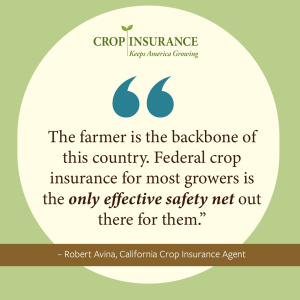Crop Insurers Building on Crop Insurance’s Strong Foundation
America’s crop insurers are committed to building on the foundational principles of crop insurance to strengthen the farm safety net and offer more risk management products to more farmers.
“Congress has repeatedly voted to strengthen crop insurance over the years, laying the foundation for a smart, actuarially-sound Federal policy,” said Scott Arnold, chair of National Crop Insurance Services (NCIS) and Chairman of Rain and Hail, in his remarks today at the crop insurance industry’s annual convention. The bipartisan and bicameral support for a strong crop insurance program has helped strengthen crop insurance’s successful public-private partnership, and Arnold said that any measures to dismantle this partnership “should be a non-starter in the Farm Bill.”
Arnold pointed to the growth of the program over the years as an indicator of its success, and of the immense trust farmers have placed in crop insurance. Last year, crop insurance protected more than 540 million acres across all 50 states, an almost 50 million acre increase from the farmland protected in 2022.
Farmers spent $6.8 billion of their own money to purchase 1.2 million crop insurance policies, which protected more than $205 billion worth of crops and livestock. In his remarks, Arnold underscored the importance of maintaining risk management tools for farmers facing weather and financial uncertainty.
“Agriculture is an essential part of the foundation of this great country. We all need nourishment to survive, and America’s farmers and ranchers should be celebrated for making that happen for all of us every day,” Arnold said. “Crop insurance is the cornerstone of the farm safety net that keeps America’s agriculture in business following regional or widespread disasters and additionally protects our nation’s food security and our citizens well-being.”
Arnold also thanked the more than 20,000 men and women who effectively deliver crop insurance, and the farmers they serve.
The crop insurance industry is using the strong foundation of crop insurance to “strengthen and expand crop insurance to better all who rely on this valuable risk management tool,” Arnold explained. “NCIS and other industry partners have championed the investments needed to ensure crop insurance remains strong, sustainable, and diverse.”
“[The U.S. Department of Agriculture] and private crop insurers never stop working to improve and strengthen the program,” Arnold said. “America’s farmers and ranchers are counting on us – and crop insurance always delivers.”









 “Wheat farmers rely on the certainty of the crop insurance program. In turn, the American people can depend on American farmers who are able to…withstand natural disasters.” – Brent Cheyne, President, National Association of Wheat Growers
“Wheat farmers rely on the certainty of the crop insurance program. In turn, the American people can depend on American farmers who are able to…withstand natural disasters.” – Brent Cheyne, President, National Association of Wheat Growers



